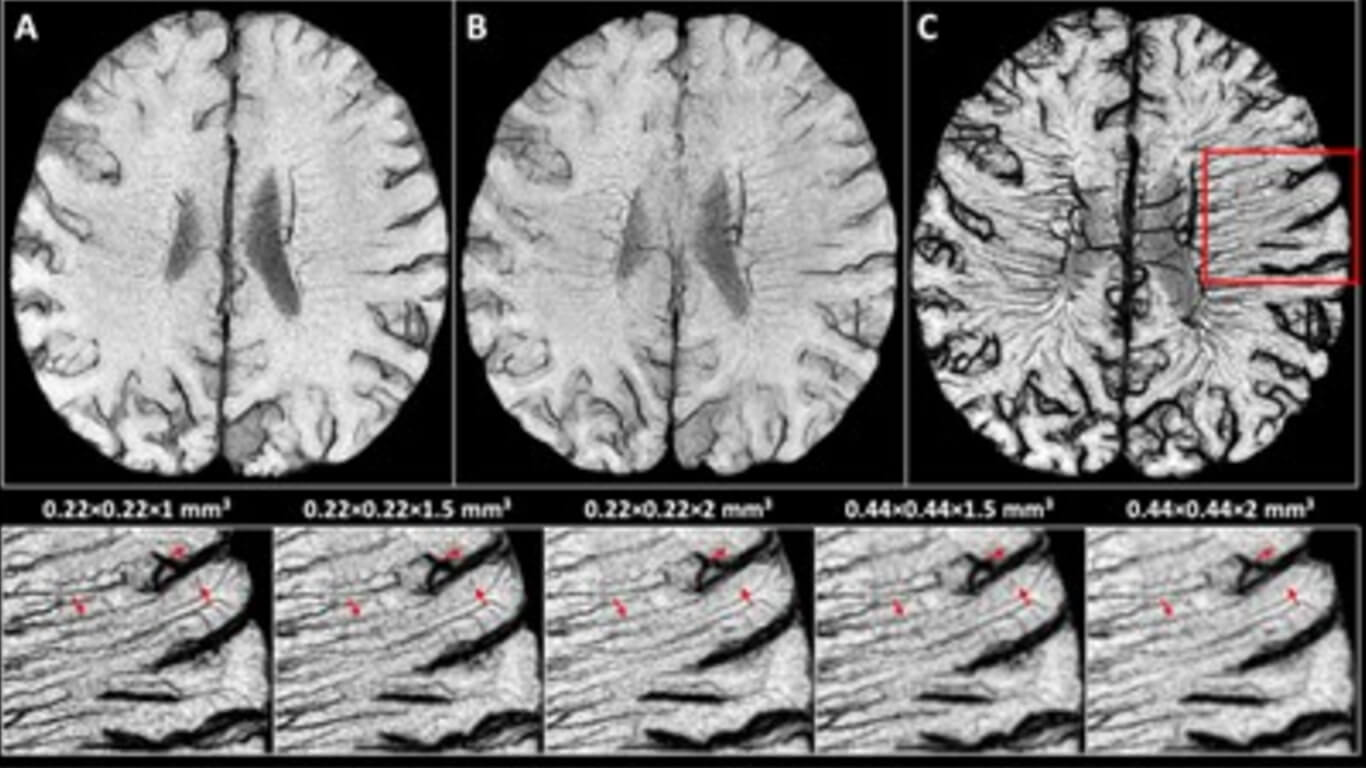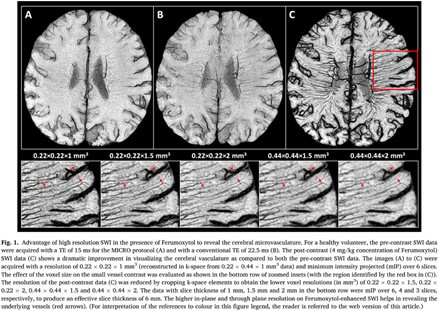
Revealing vascular abnormalities and measuring small vessel density in multiple sclerosis lesions using USPIO
By: Karen Holzberger, President & CEO of SpinTech MRI
Author(s): Sagar Buch a , Karthikeyan Subramanian a , Pavan K. Jella a , Yongsheng Chen b , Zhen Wu a , Kamran Shah a , Evanthia Bernitsas b , Yulin Ge c , E. Mark Haacke
Journal: NeuroImage: Clinical
Published: 2021
Read Full Paper: https://www.sciencedirect.com/science/article/pii/S2213158220303624?via%3Dihub
Abstract

Multiple Sclerosis (MS) is a progressive, inflammatory, neuro-degenerative disease of the central nervous system (CNS) characterized by a wide range of histopathological features including vascular abnormalities. In this study, an ultra-small superparamagnetic iron oxide (USPIO) contrast agent, Ferumoxytol, was administered to induce an increase in susceptibility for both arteries and veins to help better reveal the cerebral microvasculature. The purpose of this work was to examine the presence of vascular abnormalities and vascular density in MS lesions using high-resolution susceptibility weighted imaging (SWI).
Method
Six subjects with relapsing remitting MS (RRMS, age = 47.3 ± 11.8 years with 3 females and 3 males) and fourteen age-matched healthy controls were scanned at 3 T with SWI acquired before and after the infusion of Ferumoxytol. Composite data was generated by registering the FLAIR data to the high resolution SWI data in order to highlight the vascular information in MS lesions. Both the central vein sign (CVS) and, a new measure, the multiple vessel sign (MVS) were identified, along with any vascular abnormalities, in the lesions on pre- and post-contrast SWI-FLAIR fusion data. The small vessel density within the periventricular normal-appearing white matter (NAWM) and the periventricular lesions were compared for all subjects.
Results
Averaged across two independent raters, a total of 530 lesions were identified across all patients. The total number of lesions with vascularity on pre- and post-contrast data were 287 and 488, respectively. The lesions with abnormal vascular behavior were broken up into following categories: small lesions appearing only at the vessel boundary; dilated vessels within the lesions; and developmental venous angiomas. These vessel abnormalities observed within lesions increased from 55 on pre-contrast data to 153 on post-contrast data. Finally, across all the patients, the periventricular lesional vessel density was significantly higher (p < 0.05) than that of the periventricular NAWM.
Conclusions
By inducing a super-paramagnetic susceptibility in the blood using Ferumoxytol, the vascular abnormalities in the RRMS patients were revealed and small vessel densities were obtained. This approach has the potential to monitor the venous vasculature present in MS lesions, catalogue their characteristics and compare the vascular structures spatially to the presence of lesions. These enhanced vascular features may provide new insight into the pathophysiology of MS.

